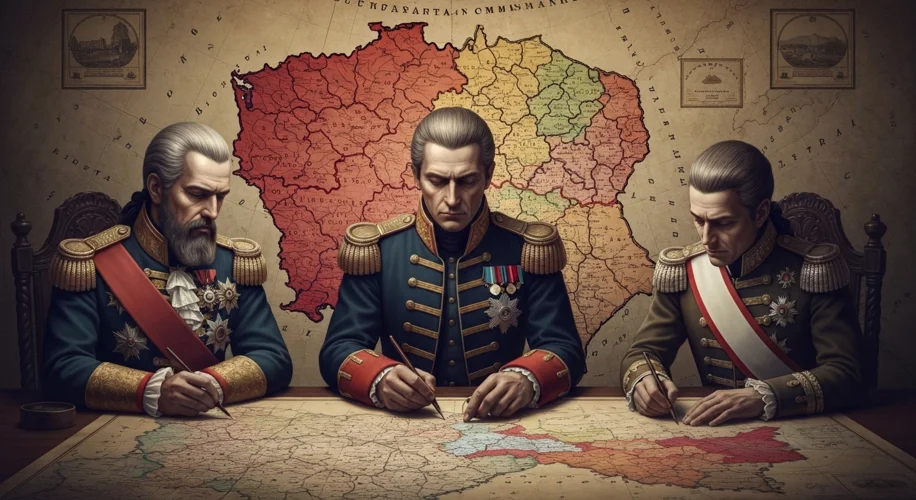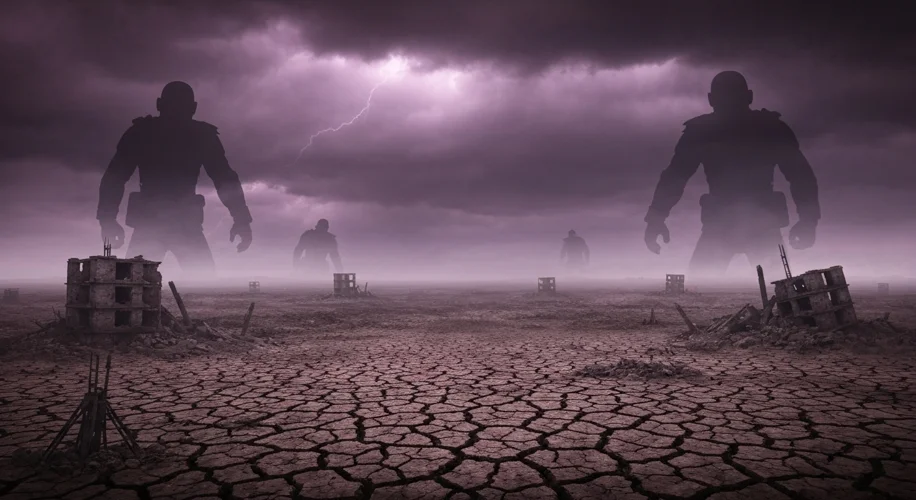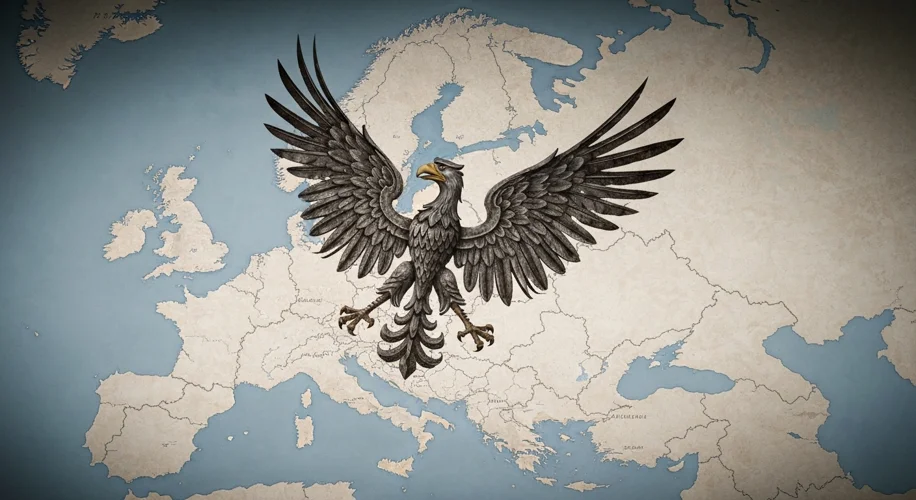The year is 1768. Europe is a tinderbox, a chessboard upon which ambitious monarchs are about to make their most daring moves. Yet, in the heart of the continent, a once-mighty kingdom, the Polish-Lithuanian Commonwealth, stands vulnerable. Its vast plains, stretching from the Baltic to the Black Sea, once echoed with the clatter of cavalry and the whispers of nascent democratic ideals. Now, a chilling silence began to creep in, a prelude to a national tragedy that would see a proud nation erased from the map for over a century.
The Polish-Lithuanian Commonwealth was a unique political entity. Elected monarchy, a powerful nobility (szlachta) that wielded significant influence, and a tradition of religious tolerance had shaped its identity. It was a land where the Renaissance bloomed, and ideas of liberty, however imperfectly implemented, were valued. However, internal strife, coupled with the growing might of its powerful neighbors – Tsarist Russia, Prussia, and Austria – created a perfect storm. The Commonwealth’s decentralized system, while noble in intent, made it susceptible to foreign manipulation and unable to muster a unified defense.
The drama began to unfold in earnest in 1768. Russia, under the iron will of Catherine the Great, saw Poland as a satellite state ripe for deeper control. Prussia, led by Frederick the Great, coveted Polish territories to consolidate its burgeoning power, particularly its fragmented lands. Austria, under Maria Theresa and later Joseph II, also eyed the potential gains, seeking to expand its influence and resources. These were not mere border disputes; this was a calculated dismemberment of a sovereign state.
The first partition, in 1772, was a shocking display of realpolitik. Under the guise of restoring order to a troubled Polish kingdom, Russia, Prussia, and Austria descended. They claimed they were annexing territories to prevent a wider European conflict caused by internal Polish unrest. In reality, they carved off significant portions of the Commonwealth’s land. Russia took Vitebsk, Polish Livonia, and parts of Belarus. Prussia seized Royal Prussia, including Marienwerder and Bromberg, thus linking East Prussia with Brandenburg. Austria annexed Galicia, a densely populated and strategically important region.

The Poles were horrified. They had been betrayed by their powerful neighbors and abandoned by many European powers who were too preoccupied with their own affairs or unwilling to challenge the aggressive expansionism of the partitioning powers. A desperate attempt at reform followed, culminating in the Constitution of May 3, 1791 – Europe’s first modern written constitution and the world’s second. It was a bold declaration of intent, aiming to strengthen the Commonwealth and prevent future interference.
But it was too late. The neighbors saw these reforms not as a sign of renewed strength, but as a threat. Russia, under the pretext of defending Polish Orthodox citizens, invaded in 1793. Prussia joined in. The second partition, swift and brutal, saw a further reduction of Poland. Russia gained vast swathes of territory, including Kyiv and Podolia, stretching deep into what is modern-day Ukraine. Prussia took Gdańsk (Danzig) and Greater Poland. The Commonwealth was now a shadow of its former self, its existence hanging by a thread.
Yet, the spirit of Polish resistance flickered. Tadeusz Kościuszko, a veteran of the American Revolutionary War, led an uprising in 1794. It was a heroic, albeit doomed, struggle against overwhelming odds. The Poles fought with courage and desperation, but the combined might of the partitioning powers was insurmountable. The failure of the Kościuszko Uprising sealed Poland’s fate.
In 1795, the third and final partition occurred. Russia, Prussia, and Austria met again, this time to completely erase Poland from the map. They divided the remaining territories, leaving no independent Polish state. The Commonwealth, a nation that had once commanded respect, ceased to exist.

The consequences were profound and far-reaching. For 123 years, Poland as a sovereign entity was gone. Its people were subjected to the rule of foreign powers, their language and culture suppressed. Millions found themselves living under Russian, Prussian, or Austrian domination. For those in territories that would become modern-day Ukraine, the partitions meant integration into the Russian Empire, often with policies aimed at Russification and the marginalization of Ukrainian identity, though the administrative and cultural impact varied.
Despite the erasure from the political map, the Polish spirit endured. The partitions ignited a century of yearning for independence. Polish culture, language, and identity were kept alive through clandestine organizations, literature, art, and secret schools. The memory of the Commonwealth, flawed as it was, served as a powerful symbol of lost freedom and a beacon for future generations.
The partitions of Poland serve as a stark historical lesson about the fragility of nations, the devastating consequences of internal division, and the ruthless ambition of powerful neighbors. It is a story of loss, resilience, and the enduring power of a people’s will to survive, a testament to the fact that even when a nation disappears from the maps, its soul can continue to beat in the hearts of its people.

This tragedy did not only affect Poles. It reshaped the geopolitical landscape of Eastern Europe, sowing seeds of future conflicts and national aspirations. The legacy of these partitions continues to resonate, a reminder of a time when a proud nation vanished, only to be reborn through unyielding spirit and the passage of time.

